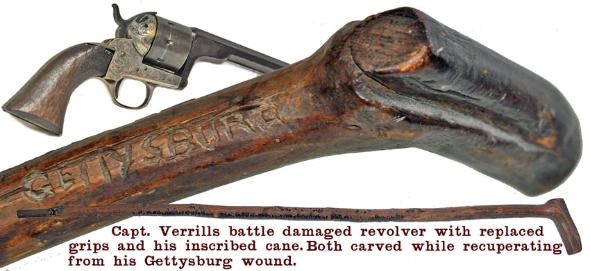

Among the things maintained by George W. Verrill as relics of the past war and his service with the hard fought 17th Maine Infantry is this photograph of the regiment taken on May 3, 1864. Just hours later the Army of the Potomac broke camp under cover of darkness and the 17th was on the move. By early morning of the 5th they would arrive at a place called Todd’s Tavern. Here they were placed in line of battle. The Battle of the Wilderness was on. In the words of veteran George Verrill in his 1894 contribution to the Maine War Papers it was here at the Wilderness that the 17th Maine Volunteer Infantry ‘took in four hundred and fifty, of whom forty-four per cent were killed or wounded’. A popular photograph among veterans of the ‘Red Diamond Regiment’, the original glass plate negative was inscribed by scratch engraving in the emulsion with many an image created from the original plate and acquired by those veterans. In this photograph Capt. Verrill has returned to his Regiment after convalescence from his Gettysburg wound. The projectile is still lodged in his thigh where it would remain pressing against a major nerve causing a progressive and ongoing lifelong disability. Capt. Verrill stands at the front of the Regiment second from the right.
Per family history passed through descendants to his great grandson and namesake, this battlefield stick was created by Verrill while recuperating from his Gettysburg wound. He would also whittle out new grips for his battle damaged Moor’s patent revolver. They would replace those shattered by the Confederate missile still lodged in his thigh. Initially useful as a way to pass the time and as a temporary mobility aid, the embedded projectile would eventually cause the old Gettysburg stick to become a permanent necessity in an aging veteran’s daily movement. His whittled out replacement grips remain with Verrill’s revolver today.







